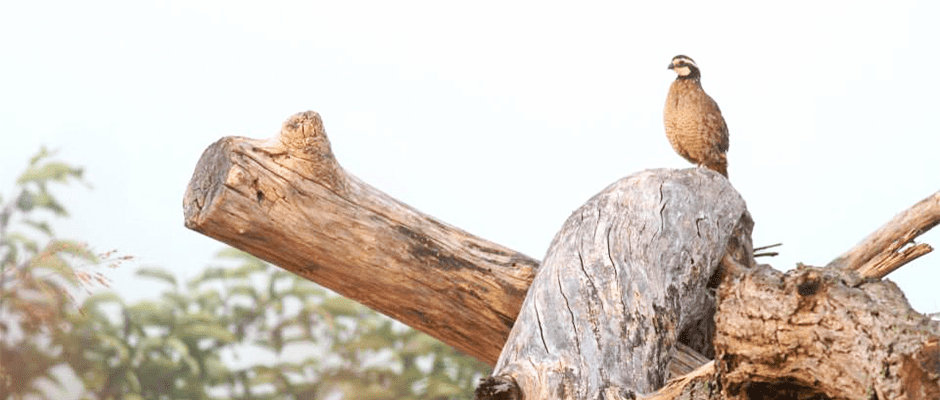Share this article
JWM study: From mining to management for bobwhite
Reclaimed landscapes scarred by surface mining could become more valuable habitat for the northern bobwhite (Colinus virginianus), according to a recent study, especially if subjected to certain methods conventionally used to manage quail.
“Because of their size and open landscapes, reclaimed mines can provide an excellent opportunity to conserve and manage bobwhite populations,” said Jarred Brooke, extension wildlife specialist at Purdue University and lead author on the paper, which was published last October in The Journal of Wildlife Management. “Through management, we can enhance these sites.”
Brooke and his team suggested that bobwhite habitat could be improved on reclaimed coal mines by reducing invasive plants and making way for plants beneficial to the birds.
Wildlife managers knew bobwhite inhabited reclaimed strip mines, but while studies had examined the ecology of songbirds and raptors associated with these novel grassland-like environments, quail remained largely a mystery.
In an effort led by the Kentucky Department of Fish and Wildlife Resources and the University of Tennessee and funded by the Wildlife Restoration Grant Program and the nonprofit Quail Forever, Brooke and collaborating researchers investigated how typical quail management techniques could make these places even more favorable to the birds. Between 2010 and 2013, they put radio collars on bobwhite at the Peabody Wildlife Management Area, a reclaimed 20th-century surface mine in west-central Kentucky.
The ecologists assessed how various habitat management decisions — applying herbicide, disking and prescribed burning — affected the quail’s population and habitat selection. They looked at how well the bobwhites’ nests survived, how they picked where to build them and how their young chose resources. The researchers also measured vegetation.
They discovered that while the vegetation offered adequate habitat for nesting and brood-rearing bobwhite, habitat management practices could improve it. The study revealed that bobwhite nested and raised broods more in places where herbicide had been applied to control the perennial sericea lespedeza (Lespedeza cuneata), an invasive plant commonly used to counter soil erosion on reclaimed mines across the eastern U.S. Decreasing sericea and other plants through herbicides and disking every couple of years promoted better cover for bobwhite to nest and rear chicks by establishing plants that were more desirable for the quail, the study found. Although bobwhite usually benefit from controlled burns, researchers noticed the birds at this location avoided burned regions because sericea recolonized them immediately after the fires. Annually disked firebreaks, on the other hand, boosted cover for young birds by providing the appropriate structure and composition for movement and foraging, they said.
The bobwhite’s reproduction and nests’ survival rates during the breeding season seemed lower than at other study sites, possibly because of dietary deficiencies caused by sericea, as the quail can’t digest its hard seeds.
“That’s why we think the management we can do to limit sericea coverage is the most beneficial,” Brooke said.
Header Image: A male northern bobwhite perches atop a brush pile built by the Kentucky Department of Fish and Wildlife Resources to increase woody cover on Peabody Wildlife Management Area. ©Eric Williams, KDFWR








